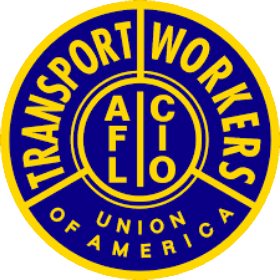This is the monthly edition of the Transport Workers Union’s Transportation Technology Newsletter. We aim to inform and educate our members, the labor movement, the public and policymakers about developments in transportation technology – and what the TWU is doing to ensure that new technology doesn’t undermine safety or harm the livelihoods of hard-working blue-collar workers. For suggestions and questions, please email ewytkind@gmail.com or adaugherty@twu.org.
ITEM OF THE MONTH
DROP THE RULES: Automakers and the autonomous vehicle industry have tried, and failed, for years to convince Congress to loosen up regulations on self-driving vehicles. Now, they are trying to convince the Department of Transportation to do the same. In late March, Reuters reported that the Alliance for Auto Innovation urged DOT to adopt new autonomous vehicle rules and declare the National Highway Traffic Safety Administration as the sole regulator of AVs. Not surprisingly, the industry wants fewer guardrails for unleashing AVs on public roads without human operators.
The automotive industry wants a new rule saying that autonomous vehicles do not require a human driver in the driver’s seat, licensing robotaxis with no controls for human input (like a steering wheel or pedals), and allowing self-driving trucks to use cab-mounted warning beacons instead of devices like safety triangles that require a human to deploy them physically. The cab-mounted beacon proposal was already struck down by the Federal Motor Carrier Safety Administration in January – highlighting the importance of human operators for large vehicles.
“This is a cynical attempt from Big Tech to overturn critical safety rules that will keep the traveling public safe,” said TWU International President John Samueslen. “Lawmakers from both parties and regulators have consistently rejected proposals to skirt safety for greater profits. The TWU will fight against any attempts to turn federal regulators into an extension of the auto lobby.”
EXPANSION COMING: Zoox, the AV company owned by Amazon, says it will begin operating on the streets of Las Vegas later this year before expanding to San Francisco, Fox Business reports. The boxy Zoox vehicles do not have manual controls for a driver to override the autonomous driving system. Waymo, which is owned by Google, announced last month it will begin transporting passengers in Silicon Valley, in addition to existing robotaxi operations in San Francisco, Los Angeles, Phoenix, and Austin.
EXPANSION COMING? Waymo also has its sights set on Washington, DC, the Washington Post reports. The company is aiming to launch paid rides in 2026 without a driver behind the wheel. Self-driving cars without a driver behind the wheel are currently banned in the nation’s capital. And there’s another hurdle – riders in DC won’t be able to get to any of the region’s airports which are all located across state lines.
DOUBLE PARKED: But, as the Post also reports, AVs still make errors. Waymo vehicles in San Francisco racked up 589 tickets for parking violations in 2024 totaling more than $65,000 in fines. In Los Angeles, where Waymo service started in November of last year, Waymo vehicles racked up 75 tickets. And transit operators in San Francisco lost 2 hours and 12 minutes of service time in 2024 because of Waymo vehicles blocking or colliding with buses and trams.
“AVs cause traffic by clogging streets, blocking transit, and in some serious cases can cause physical harm,” said TWU International Administrative Vice President Curtis Tate. “The stats out of San Francisco show what we’ve argued for years, robots making the decisions will continue to cause problems for everyone.”
WHAT ELSE IS COOKING
AUTONOMOUS OVERRUNS: The Washington DC Metro called off a planned expansion of automated trains to the agency’s Green Line after dozens of Red Line trains have overrun stations since automatic train operations were reintroduced in December of last year. The Washington Post reports that 217 trains have overrun stations on the Red Line in the last four months, ten times as many overruns as human-operated trains. Paul Smith, director of systems at the Washington Metrorail Safety Commission, said the overruns were occurring at “an unacceptable level.”
While overruns aren’t considered a safety issue by the FTA, they do infuriate passengers. Trains that overrun their stations are required to skip the stop. Automatic train operation was turned off in Washington after a deadly 2009 crash – and the automated system that was designed in the 1960s continues to have reliability issues.
“Automated technology isn’t new to the transit industry, especially for trains,” Tate said. “But when automated systems malfunction at a higher rate than under human guidance, are they ready to replace humans?”
LIMITED MOBILITY: Despite a spate of crashes and incidents involving robotaxis, last month the city of Barcelona tested a new driverless robo bus without an operator at the wheel. French automaker Renault is partnering with Chinese driverless mobility company WeRide, whose investors include global chipmaker Nvidia, to offer free rides on a 1.3 mile road after testing the technology at last year’s Grand Slam tennis tournament, the French Open. Demonstrating the significant limits of its technology in a large public transportation setting, the robo bus maker admits the electric vehicle can only operate at 25 mph for up to 75 miles without a recharge.
WHAT WE’RE READING:
Driverless Car Sets Autonomous Speed Record. The Verge
A Waymo Robotaxi got trapped in a Chick-Fil-A drive-through. TechCrunch.
UK AI start-up Wayve clinches first carmaker deal with Nissan. Financial Times.

